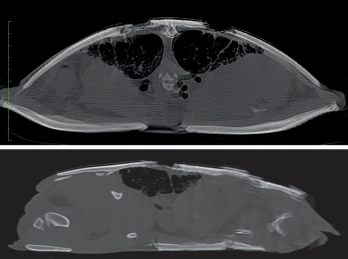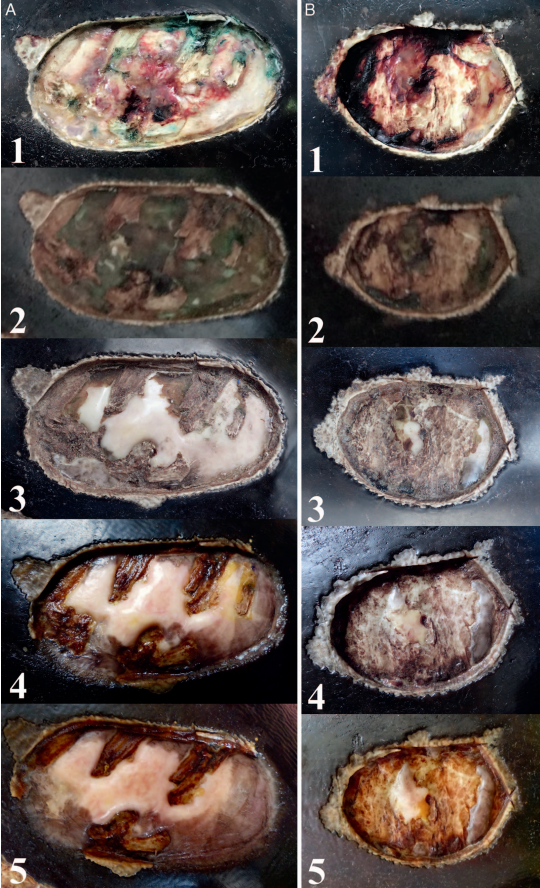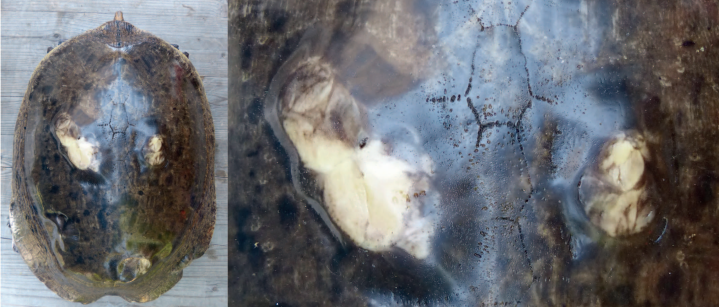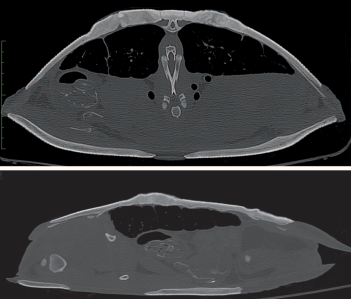Published: The Journal of Herpetological Medicine and Surgery, Volume 32, No. 4, 2022 pp.262-270
Keyword: Photobiomodulation, PBM, Laser therapy, Shell rot, Ulcerative Dermatitis, Softshell turtle
Author(s): S. DiRuzzo, P. Praschag, L. Miller, M. Brodsky
Overview
This study describes successful treatment of severe ulcerative dermatitis in a softshell turtle using advanced imaging (CT), surgical debridement and ostectomy, supportive care, husbandry modifications, and photobiomodulation (PBM). This report highlights that PBM can be a valuable therapeutic tool that should be considered for treatment of ulcerative dermatitis in softshell turtles, especially patients with delayed wound healing or chronic dermatologic lesions.
Materials/Methods
An adult, wild-caught, intact female Aubry’s flapshell turtle (Cycloderma Aubryi) that had been in the collection for 21 months presented with rapid onset of multifocal, tan-white, 1.5cm and smaller crateriform, ulcerated lesions on the carapace and plastron. Empirical antibiotic therapy, initiated on the suspicion of an infectious etiology, yielded no clinical improvement and the disease progressed. Multifocal osteomyelitis was visible deep to the dermatological lesions on the carapace and plastron on computed tomography (CT) imaging, and culture results included Stenotrophomonas maltophilia and Achromobacter (Alcaligenes) xylosoxidans. Two months after surgical debridement and ostectomy, healing of lesions was incomplete and slow to progress. Photobiomodulation (PBM) was initiated.
Results
17 days after PBM was initiated on some of the lesions, grossly visible indications of progressive healing were evident. There were no indications of healing in the untreated lesions. Treatment with PBM was subsequently implemented for all lesions and the patient made a full recovery.
Conclusions
PBM can be a valuable therapeutic tool that should be considered for treatment of ulcerative dermatitis in softshell turtles, especially patients with delayed wound healing or chronic dermatologic lesions, and it is a therapeutic modality that warrants continued research and evaluation for use with exotic species. Therapeutic modalities that support or enhance wound healing allow patients to be returned more quickly to optimal husbandry conditions and may play an important role in achieving successful outcomes in aquatic turtle species.
Treatment photos follow.

Sagittal and transverse computed tomography (CT) images of penetrating lesions and bone lysis in an Aubry’s
flapshell turtle (Cycloderma aubryi) 11 weeks after initial presentation.

Carapace lesions in an Aubry’s flapshell turtle (Cycloderma aubryi) immediately following surgical debridement. (A) The
large cranial lesion on the left and (B) the large cranial lesion on the right were used to compare the effects of photobiomodulation
(PBM) treatment over the following 2 months.

Carapace lesions in an Aubry’s flapshell turtle (Cycloderma aubryi) documenting changes over time in two lesions. (A)
Lesion treated with photobiomodulation (PBM) therapy beginning on 26 February 2019, (B) lesion originally not treated with PBM.
This lesion was treated with PBM beginning on 13 March 2019 (1) 4 January 2019, 1 wk postsurgery; (2) 21 January 2019, 24 days
postsurgery; (3) 26 February 2019, 60 days postsurgery, and immediately before initiating treatment of lesion A with PBM; (4) 13
March 2019, 75 days postsurgery, at which point lesion A had received four PBM treatments and lesion B had not been treated with
PBM; (5) 25 March 2019, 87 days postsurgery, lesion A had received nine PBM treatments and lesion B five PBM treatments.

Carapace lesions in an Aubry’s flapshell turtle (Cycloderma aubryi) on 1 July 2022, more than 2 yr after ending treatment. Image on right shows a close-up of the same lesions.

Sagittal and transverse CT images of the same penetrating lesions in an Aubry’s flapshell turtle (Cycloderma aubryi) shown in Figure 1, from followup CT on 4 August 2021, 29 months after ending treatment, showing healed shell lesions with bone regrowth.
